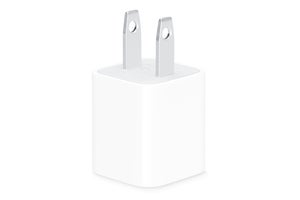Best iPhone chargers: USB-C power adapters for the iPhone
If you’ve ordered a new iPhone recently, you’ll notice that the box is a whole lot slimmer than in previous years. That’s because the bulkiest accessory is gone: the power adapter. Apple has removed the charger from all iPhones it sells, so whether you’re spending $429 on an iPhone SE or $1,599 on a maxed-out iPhone 13 Pro Max, you need to bring your own charger.
Any old charger and Lightning cable you have lying around will work, of course. But if you’ve been using Apple’s old 5W adapter, it’s a perfect time to upgrade. Apple now supplys a USB-C-to-Lightning cable in all iPhone boxes to allow for fast charging, so all you need is the right charger. Here we list our favorite iPhone 12 and iPhone 13 chargers, but paired with the right cable they will work wonders for older iPhones, too.
Watch the wattage
The most important thing to consider when buying a new charger is the amount of wattage it will provide to your device. For years, Apple supplied “good-enough” 5-watt chargers in the iPhone box, which take about 2.5 hours to fill up your iPhone. That was fine for the iPhone 5 and earlier, which didn’t support fast charging, but the newest iPhone models are capable of working with chargers that handle up to 20 watts. You can fill up about 50 percent of an iPhone 13’s battery in about 30 minutes with the right adapter.
So you should get a USB-C charger that’s capable of delivering a 20-watt charge. Quite frankly, it’s harder to find one that doesn’t than one that does, but you’ll want to make sure you’re at least getting the bare minimum to allow for maximum fast charging. You’ll also want to make sure the charger supports USB Power Delivery, which any third-party charger almost certainly will do.
Check the size and the specs
Apple’s chargers have always been light, small, and portable, but some third-party adapters make them seem downright bulky. That’s due to the newest charging tech, gallium nitride (GaN), which allows for adapters that are significantly smaller and more power-efficient.
Charger makers have already begun replacing the silicon inside power adapters with gallium nitride, and the size difference is significant. For example, the Anker PowerPort Atom III is 35 percent smaller than the adapter Apple supplies with the 13-inch MacBook Pro, despite delivering the same 60-watt charge. Unless you’re buying one of the models here—which are all GaN except for Apple’s adapter—be sure to check out the dimensions in the technical specs.
Count the ports
Many third-party adapters offer multiple ports on a single wall charger. Even Apple has now caught up with its latest dual-port power adapter. If you’re going to be regularly charging more than one device at a time, buy an adapter with at least two ports—some have as many as four ports. You can even get a mix of USB-C and USB-A, depending on your needs.
Prongs: To fold or not to fold
After you decide how much power and how many ports you need, just one question remains: Do you want the prongs to fold or not? Some third-party chargers have folding prongs to protect the adapter as well as other items if you toss it in a bag, but Apple’s 20W charger and a few others have protruding prongs. It’s a small thing, but it could make a big difference in your travel bag.
As any traveler knows, plugs come in all shapes and sizes around the globe. We’ve tried to cover the most used types here. Some USB-C power adapters even come with different prong sets so mean you can leave the multi-holed travel adapter at home when you travel.
Best iPhone chargers reviewed
Below we’ll look at the best iPhone chargers you can buy now.
In summary, our favorite single-port 20W iPhone charger in the US is the Anker PowerPort III Cube with foldable prongs. Our recommended charger for UK iPhone users is Apple’s 20W USB-C Power Adapter—unlike Apple’s US version, the UK adapter does feature foldable prongs. In AU/NZ, the only real premium option is Apple’s 20W adapter. You can buy cheaper than Apple but not by much at the 20W level.
But there are many others, with more ports and fancy features recommended below.
Apple 20W USB-C Power Adapter – Official Apple iPhone charger
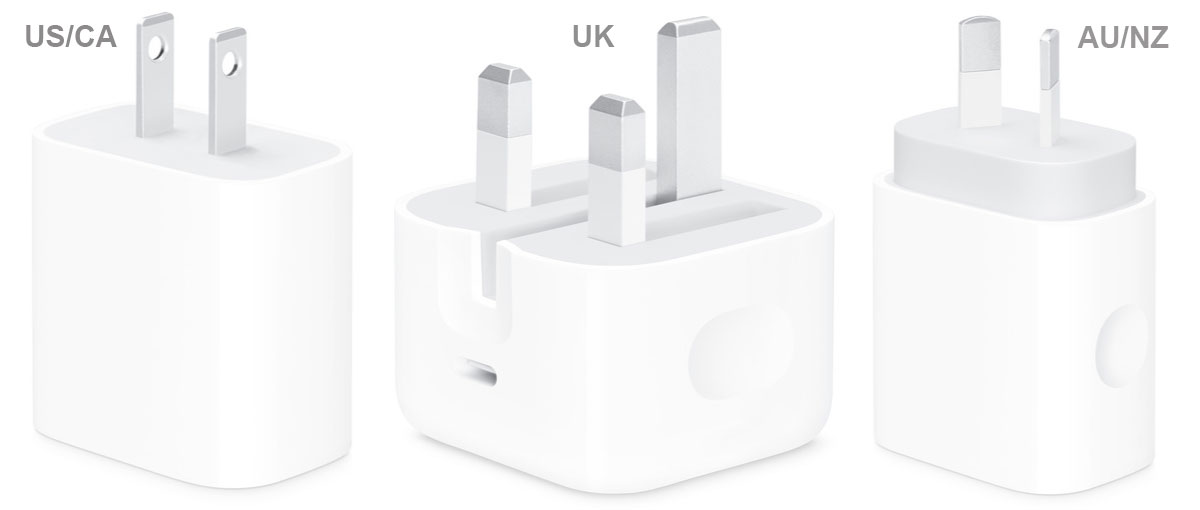
Pros
- Official Apple charger
- Foldable prongs on UK model
Cons
- No foldable prongs on US/AU models
- One port
Why we love it: Apple’s 20W USB-C power adapter is as basic as it gets. It’s one of the bulkiest chargers on this list as well as one of the heaviest, it won’t charge a laptop, and you can’t charge more than one device at a time. However, if you want to keep your chargers in the family, it’s a solid option for $19 / £19. In our testing, it won’t charge your phone noticeably faster than the old Apple 18W plug, but it is noticeably cheaper than the previous price. We’d like it better if Apple offered a half-price option for iPhone buyers, but even at full price, it’s not a terrible value at all.
The US and AU models don’t feature folding prongs, but the more cube-like UK model does, despite the larger plug type, and is a much cleaner design as a result. The hideaway prongs on the UK model make it our favorite single-port iPhone charger in that country.
Anker PowerPort III 20W Cube Fast Charger – Best one-port iPhone charger
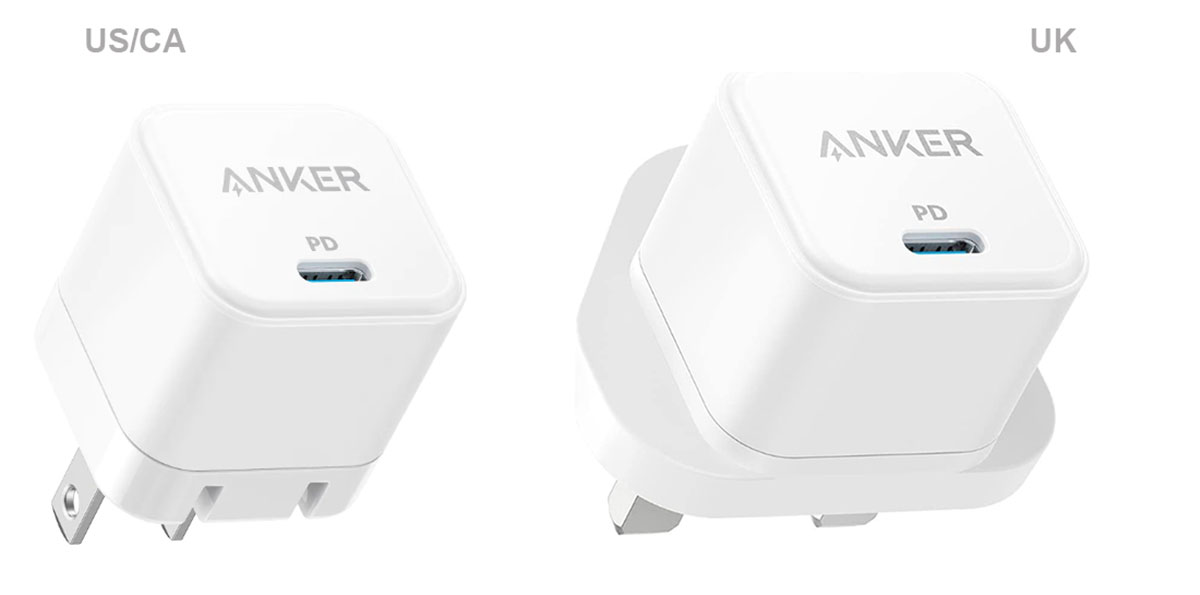
Pros
- Small size
- Foldable prongs on US model
Cons
- No foldable prongs on UK model
- One port
Why we love it: At 1.23 x 1.25 x 1.3 inches, the compact GaN-tech Anker PowerPort III is slightly bigger than the Anker Nano Pro but its hideable prongs make it a better traveling companion in a pocket or bag.
The UK model is less flexible due to the size of the UK plug that here doesn’t allow for foldable prongs, and so we prefer the Nano Pro or the even finer Apple 20W Charger in that country only.
Anker 511 20W Charger (Nano Pro) – Smallest iPhone charger
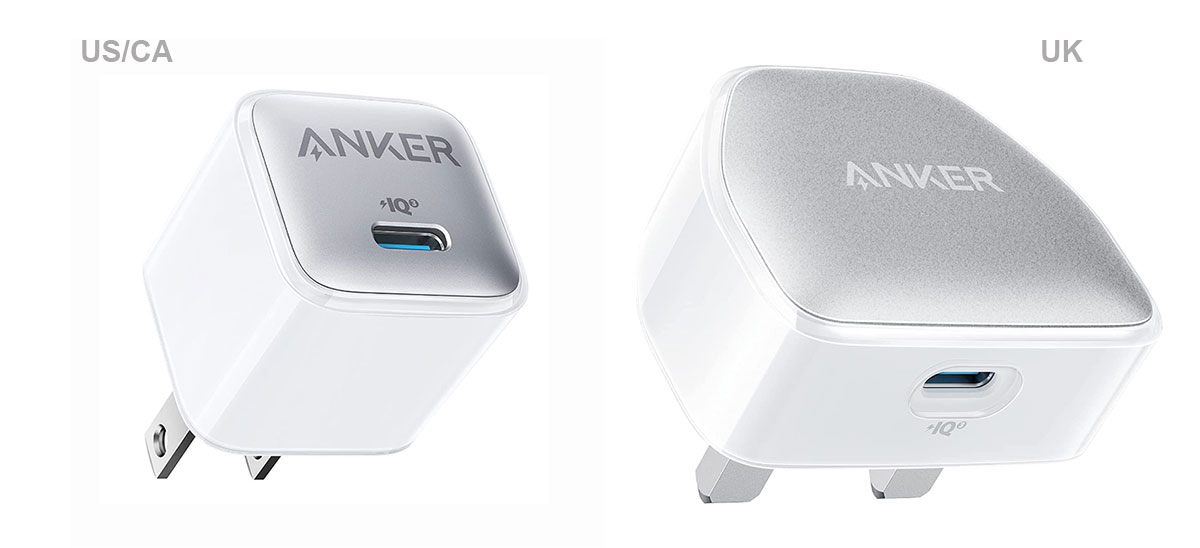
Cons
- Prongs not foldable
- One port
Why we love it: The Anker 511 20W Nano Pro is a great alternative to Apple’s 20W charger. The dinky US model measures 1.16 × 1.16 × 1.18 inches compared to Apple’s larger 2.64 x 1.26 x 3.27 inches. The bulkier UK version looks like the old Apple 5W charger but still has the 20W punch. Neither has foldable prongs.
Aside from its tiny size, what really sets it apart is its range of five colors—Arctic White, Black, Cool Lavender, Glacial Blue and Powder Pink—compared to Apple’s white-only option.
Anker 521 40W Charger (Nano Pro) – Best two-port iPhone charger
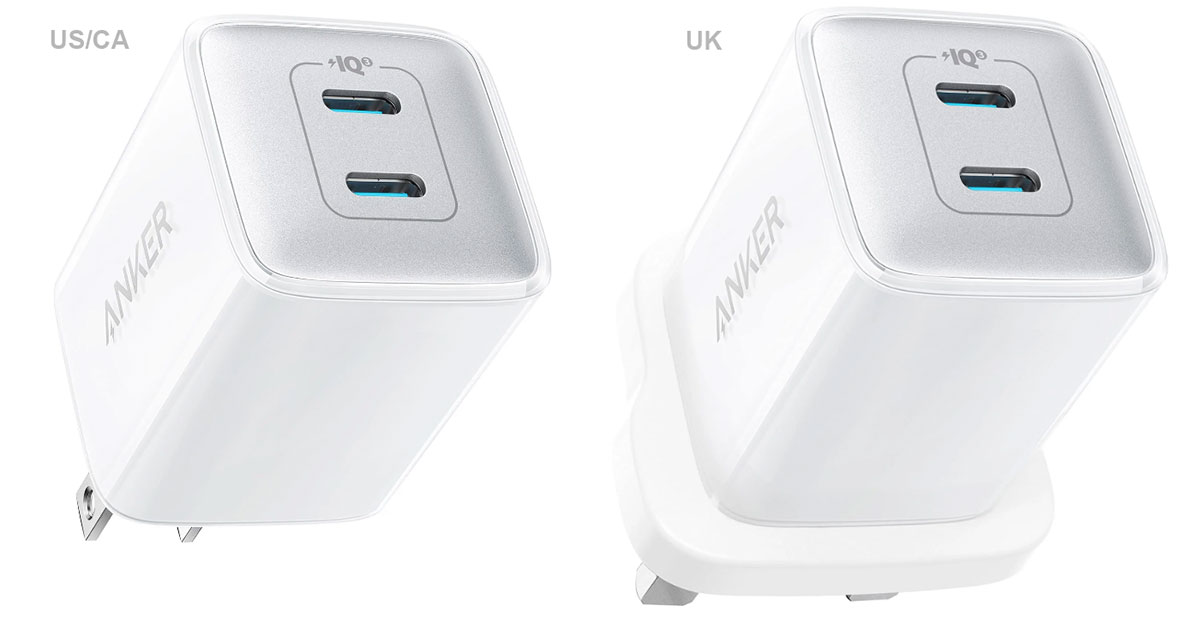
Why we love it: The Anker 521 USB-C Nano Pro Charger is twice the power adapter that the Anker 511 Nano Pro is, but at 1.37 x 1.34 x 1.8 inches isn’t much larger.
Rated at 40W, it boasts twice the charging power and has two ports so you can charge two iPhones simultaneously at 20W—making it a great choice for homes with a couple of iPhones in need of a power boost.
Minix NEO P3 100W Turbo – Best multi-port charger

Pros
- Four ports
- Up to 100W
- US/UK/EU pins
- Foldable prongs
Cons
- May be overkill for just a phone
Why we love it: The Minix NEO P3 100W Turbo packs a lot of power and has four ports: three USB-C and one old-school USB-A.
Two of the USB-C ports can charge at 100W, although obviously not at the same time. That means you can use this power adapter to charge a large laptop as well as tablets and phones. The third USB-C is perfect for phone charging at 20W, as is the 18W USB-A port if you have an older charging cable.
Using two ports at the same time it supports one 65W and one 30W feed. Using three supports 45W, 30W and 20W charges. With all four, it supports, 45W, 30W and two 7.5W feeds.
Like Apple’s dual-port charger, this adapter features intelligent power allocation, automatically adjusting the power output of each port depending on the devices connected to it.
Like Apple’s dual-port charger, this adapter features intelligent power allocation, automatically adjusting the power output of each port depending on the devices connected to it.
The US prongs fold, making it a tidy package for carrying around, and the UK and EU pin converters slide onto the US prongs to make this a great home charger in those territories and a useful international travel companion.
Minix 66W NEO P1 Turbo Wall Charger

Pros
- Three ports
- Up to 66W
- US/UK/EU pins
- Foldable prongs
Cons
- May be overkill for just a phone
Why we love it: A smaller, less powerful but cheaper Minix multi-port power adapter, the NEO P1 can charge up to 66W, enough for a mid-sized laptop such as the 13in or 14in MacBook Pro, and its three ports make it a great phone charger, too.
Using two ports at the same time it supports two 30W feeds or one 45W and one 18W. Using all three supports 30W and 2x 18W charges.
Like its big sibling, this charger ships with UK and EU converter pins.
Apple 35W Dual USB-C Port Power Adapter

Pros
- Two ports
- Compact US model has foldable prongs
Cons
- Larger model doesn’t have foldable prongs
- Expensive
Why we love it: Apple recently released its own dual-port USB-C charger in two models. As far as we can tell they are identical in everything except shape and size. As an Apple product, it’s reassuringly expensive but also a little smarter than most power adapters.
There are two models: the neat 35W Dual USB-C Port Compact Power Adapter aimed at iPhone users, and a larger non-compact model called the 35W Dual USB-C Port Power Adapter, which is the one built for the new M2 MacBook Air. Both feature foldable prongs. The larger version is maybe only preferable if you prefer the ports pointing straight on rather than below the plug itself.
As it was designed to work with an iPhone and also something as energy hungry as an M2 MacBook Air, it needs to be able to distinguish which device needs what. When you connect two devices, power is automatically distributed between them based on their power requirements. In most cases it will give each device 17.5W, but if you connect a MacBook or iPhone and an Apple Watch or AirPods, the first receives up to 27.5W and the Watch/AirPods gets up to 7.5W.
Apple doesn’t say so, but we expect that it uses GaN technology to keep its size to a minimum.
Spigen PowerArc 20W ArcStation Pro

Pros
- Small size
- Foldable prongs on US model
Cons
- No foldable prongs on UK model
- One port
Why we love it: We spotlighted numerous gallium nitride chargers on this list, but Spigen’s PowerArc 20W (1.56 x 1.36 x 1.09 inches) is one of the smallest. When opened, it’s only a bit larger than Apple’s prior 5W adapter (which measures 1.74 x 1.01 x 1.03 inches) but charges four times as fast, whether you’re using a USB-C-to-Lightning cable or a MagSafe cable, thanks to GaNFast technology instead of old-fashioned silicon. The fold-up plug keeps the size down and ensures it won’t get snagged on anything in your bag, and its small size means it won’t block other chargers in a power strip.
The UK version’s larger plug type sadly means no foldable prongs but it’s still a likeable little chap.
Eggtronic Sirius 65W USB-C PD

Pros
- Super-slim design
- Up to 65W
- Foldable prongs
It can charge at up to 65W, which means it’s suitable not just for an iPhone but a tablet and even a mid-sized laptop, such as a MacBook Air or 13in MacBook Pro.
Wired and wireless
Whether you charge your iPhone wirelessly or not, you still need a wall charger to supply the power, and even wireless requires a cable from that power adapter to the charging pad.
Apple ships a USB-C to Lightning cable with each iPhone for wired charging, but most of the chargers tested here don’t come with a cable.
From the iPhone 8 on, iPhones have the ability to be charged wirelessly. The latest iPhone 12 and 13 models also feature Apple’s superior MagSafe wireless charging technology; check out our roundup of the best MagSage chargers, most of which require one of the USB-C wall chargers tested here.
Charging with a cable plugged into the iPhone will always be faster than wireless; we list some of the best iPhone charge cables later in this article.
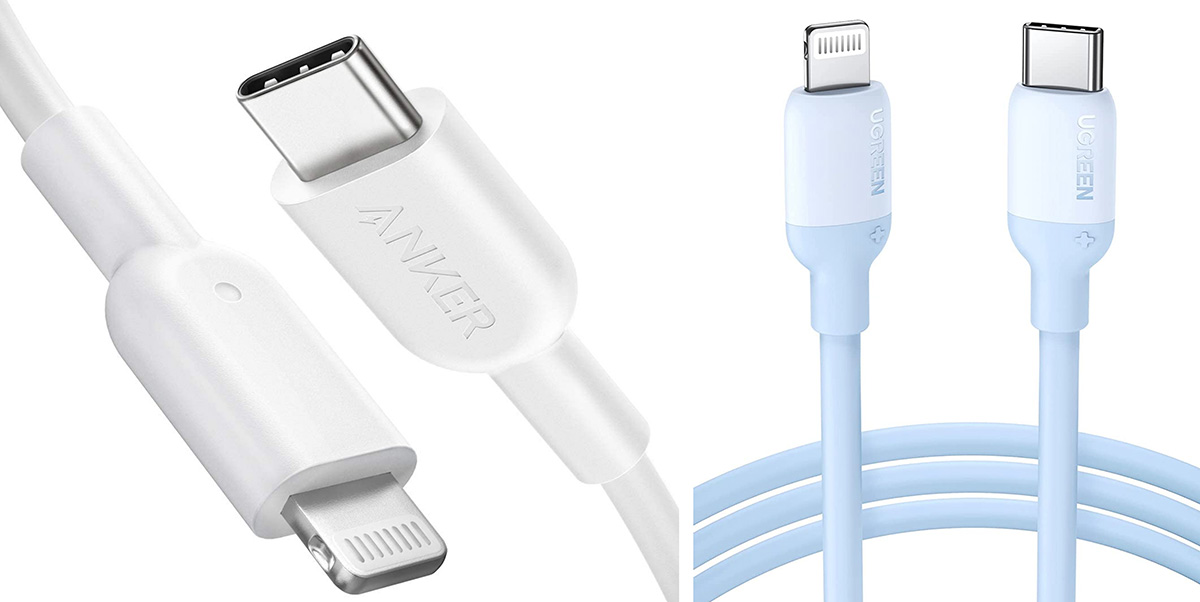
Amazon
Best iPhone charge cable
Apple still includes a USB-C to Lightning cable in the box with a new iPhone. But you can never have enough charging cables, right?
If you need a spare, make sure you buy a USB-C to Lightning cable that’s certified Made for iPhone (MFI).
Anker makes several of our recommended iPhone chargers and its MFI-certified USB-C to Lightning cable is a little cheaper than Apple’s own cable, and is twice as long. Anker has a bunch of USB-C to Lightning cables in various lengths and colors on its US Amazon Store and at Amazon UK.
We also rate UGreen’s USB-C to Lightning iPhone charge cables.
What is GaN?
Gallium nitride, or GaN for short, is a lightweight, crystal-like material that’s capable of conducting far higher voltages than silicon.
It produces less heat, meaning that components can be packed closer together for more processing power.
As heat is a key factor in how long electronic devices keep working, GaN heat efficiency means a GaN charger should keep working longer than silicon chargers.
How much power do you need to charge an iPhone?
With Fast Charge, Apple says that the iPhone 12 and up will reach a 50% charge in around 30 minutes with a 20W adapter or higher.
Most of the iPhone chargers we have tested here are rated at 20W. To be sure you’re getting all the power you need, you’ll want a modern power adapter that works with at least USB-PD 3.0, which is especially important if you are charging with MagSafe.
You can buy more powerful chargers—at up to 100W—but they won’t speed up the charging process as the iPhone can only take so much at a time. However, a more powerful charger means you can use it to power up a tablet or MacBook, too, and with multiple ports you can charge devices simultaneously.
Read Tech Advisor’s roundup of the Best USB-C PD Chargers for the most powerful multi-port options.
For all the latest Technology News Click Here
For the latest news and updates, follow us on Google News.

